AstroPhotonics Technology Lab
Astrophotonics is an exciting new field marking the synergy between the science of astronomy and
photonics technology. The cost and size of conventional astronomical instruments scale as
the volume of the telescope (i.e., cube of the telescope diameter).
But the advent of astrophotonics has opened up avenues to massively miniaturize astronomical
spectrographs and reverse the cost and size spiral.
With collaborators across the world, this group is working on the development and on-sky demonstration of various innovative astrophotonic devices
including on-chip photonic spectrographs, photonic beam combiners, Mach-Zehnder interferometers
as well as fiber-based devices such as photonic lanterns. While the main application is for astronomy and exoplanet science,
several broader applications (such as telecom, sensing, etc.) are possible.
Gatkine led an Astrophotonics white paper for the
Astro2020 Decadal Survey.
He also co-led the Astrophtonics Roadmap (along with Jovanovic),
a global comprehensive effort with 25 chapters showcasing the latest developments in Astrophotonics and the challenges to be resolved in this decade.
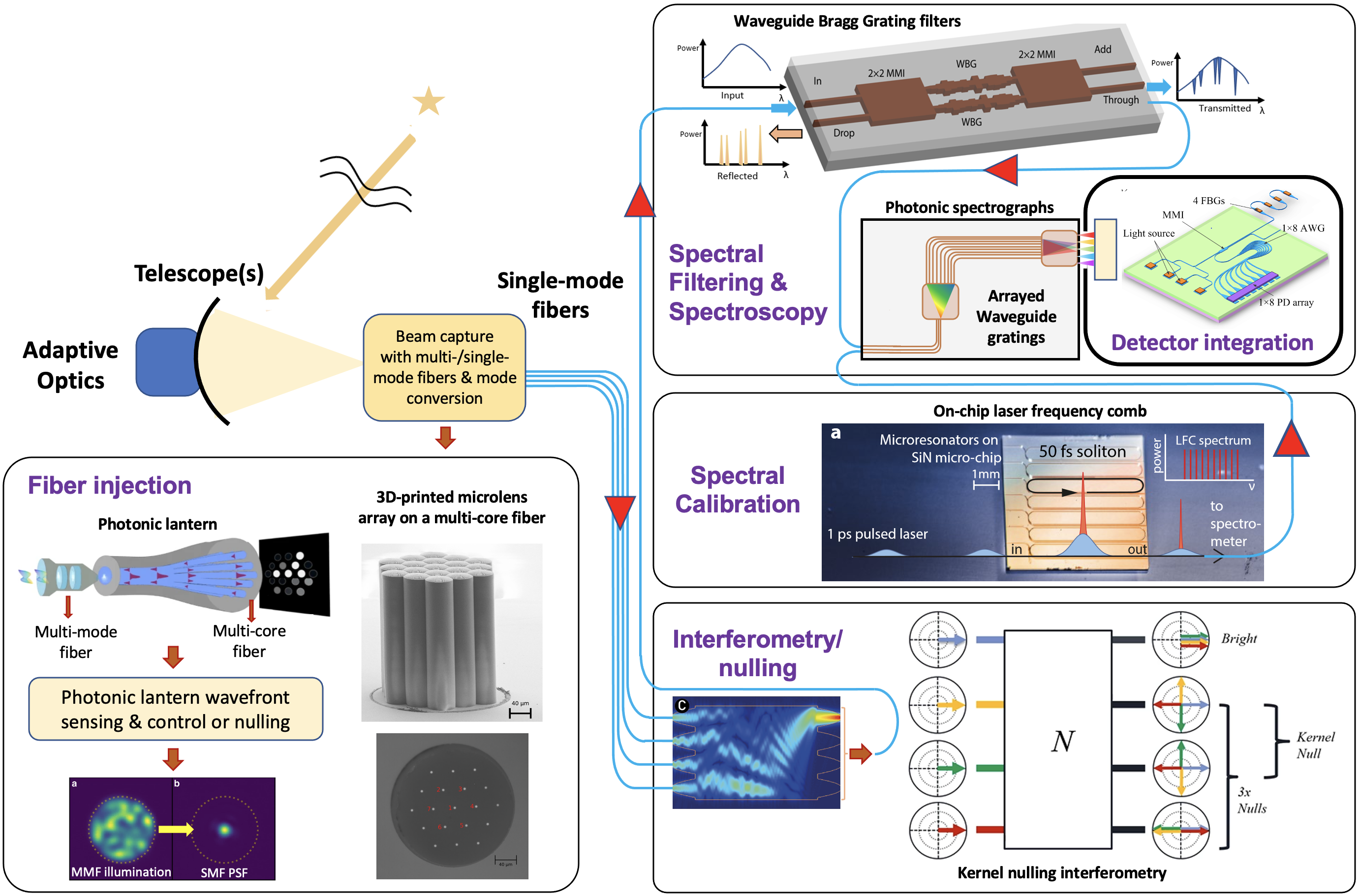 |
Relevant Publications:
Development of on-chip Astrophotonic Spectrographs
We are developing a variety of on-chip
spectrographs built entirely from small-scale integrated photonic devices,
miniaturizing the spectrometer to the size of a shoe-box.
At its heart is the concept of Arrayed waveguide gratings, which allows fine-tuning of path
lengths of individual light channels to get constructive interference peaks at precise locations,
within a few nanometers. All of this photonic action happens on a tiny chip (~ 2cm x 2cm)
fabricated using various nanofabrication processes.
We are working to mature this technology for the stringent requirements in astronomy such as
high-resolultion, high efficiency, broadband, and polarization independent.
We aim to prepare this technology for future investigations of exoplanet atmospheres and galaxies using
ground-based extremely large telescopes (ELTs) and future space missions such as Habitable Worlds Observatory (HWO).
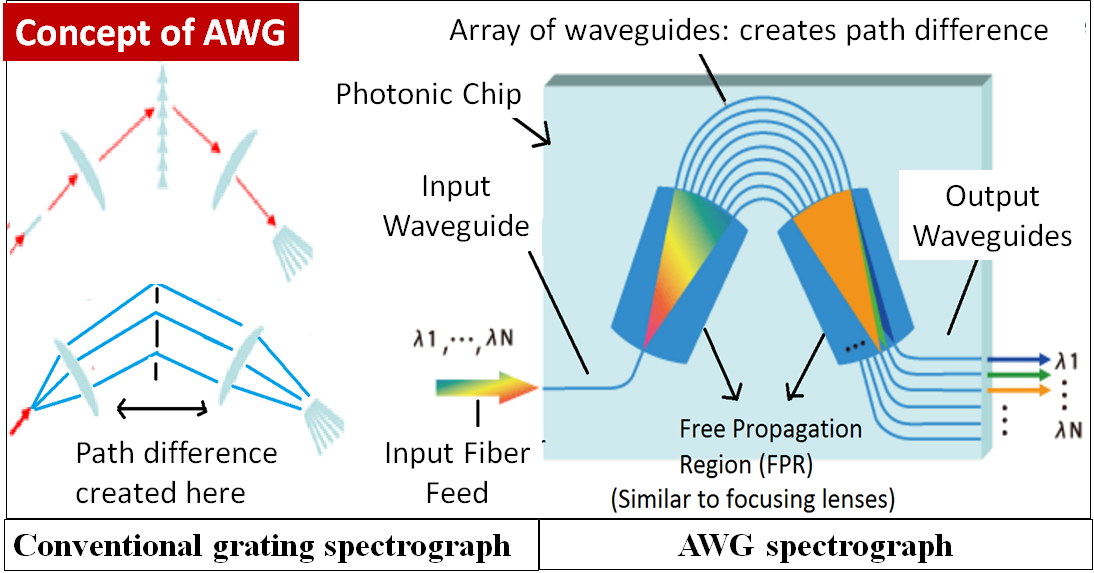 |
Relevant Publications:
Press release: Best student presentation award at SPIE Astronomical Instrumentation + Telescopes, Edinburgh, UK
Atmospheric OH-suppression using Photonic Bragg Gratings
For ground-based telescopes, atmospheric-OH emission lines lead to a bright background in near-infrared, thus greatly reducing signal-to-noise ratio (SNR) for faint objects such as distant GRB afterglows. The photonic technology of Fiber Bragg Gratings (FBGs) has been recently demonstrated to significantly reduce the NIR background by blocking the OH-emission lines without significantly affecting the interline continuum. We simulate and characterize the performance of fiber Bragg gratings (FBGs) and waveguide Bragg gratings (WBGs) in the near-IR using a detailed model of sky background, atmospheric background and emission as well as instrument pipeline. The preliminary results show an estimated ten-fold improvement in signal-to-noise ratio.
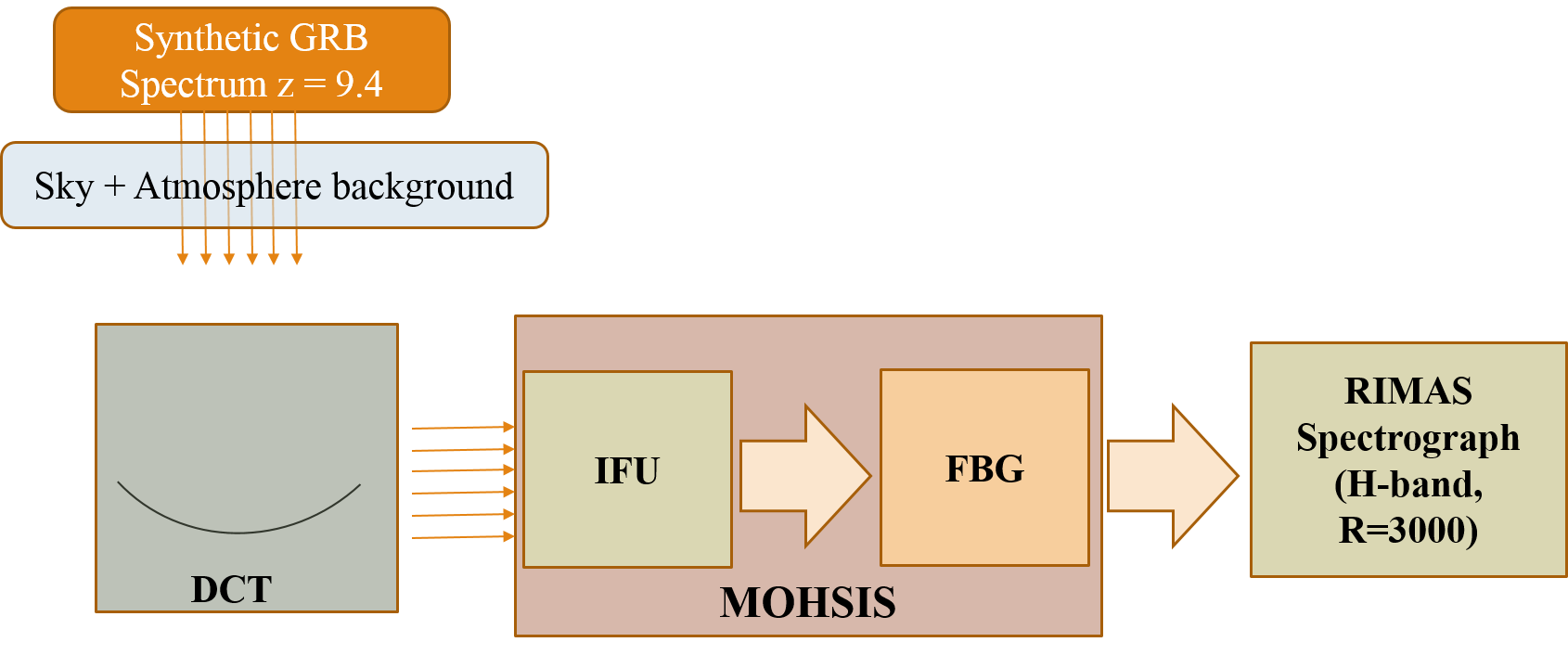 |
Relevant Publication:
Photonic Lanterns
Due to the large spot size in a ground-based seeing-limited observation, channeling this light requires the use of large multimode fibers
(MMFs, ∼several tens of modes). However, the photonic manipulation is only possible for single-mode fibers/waveguides.
A photonic lantern is an adiabatic taper enabling a low-loss transition from the MMF to a set of
single-mode fibers/waveguides.3 Photonic lanterns also make it possible to reformat the beam
by rearranging the output single-mode fibers, thus tremendously enhancing the flexibility.
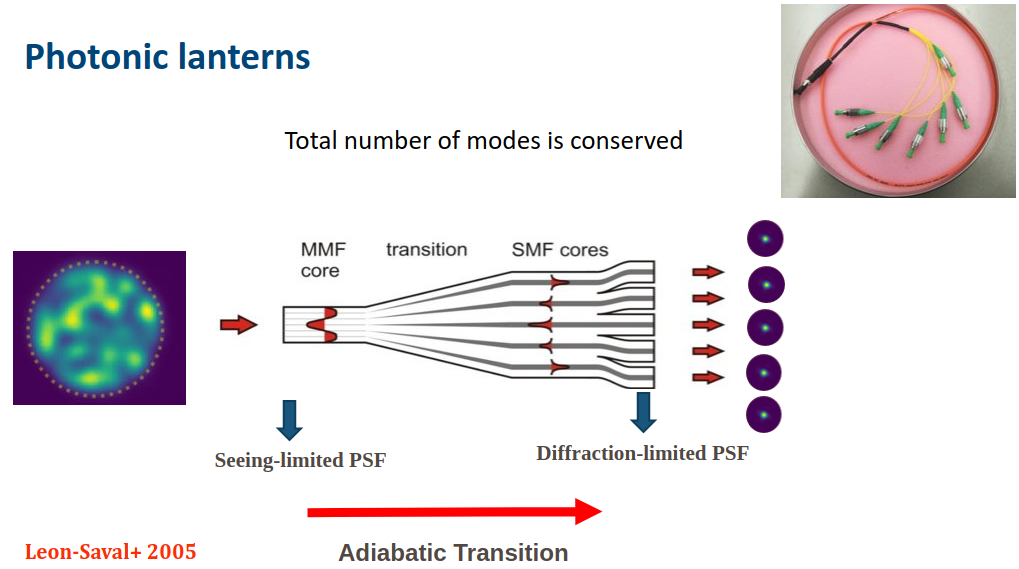 |
Relevant Publications:
Gamma-Ray bursts as the probes of early universe
Gamma-ray bursts (GRBs) are bright flashes peaking in gamma-ray, releasing as much energy in a few seconds as the sun over a course of its 10-billion-year lifetime. GRB afterglows have been detected from low redshift ∼0.01 out to redshift of 8.2 (Tanvir et al. 2009), thus probing all the way back to the first billion years of the universe . The prompt gamma-ray emission is followed by a multiwavelength synchrotron afterglow lasting a few days. The prompt discovery and localization of GRBs, thanks to NASA's Swift mission, has allowed a rapid follow-up of the afterglows with ground-based telescopes. The afterglow spectra harbor absorption features produced by the material along the line-of-sight (host galaxy, circumgalactic medium and intergalactic medium), The ions (at low and high ionized state) provide an excellent opportunity to explore the GRB Host galaxy environment, the excitation mechanism of these lines, metallicity and dust content. I particularly study the circumgalactic medium, residing at the nexus of accretion flows, galactic winds and outflows. I use the high-resolution spectra of GRB afterglows to study the kinematics of these feedback mechanisms of GRB hosts and their evolution as a function redshift.
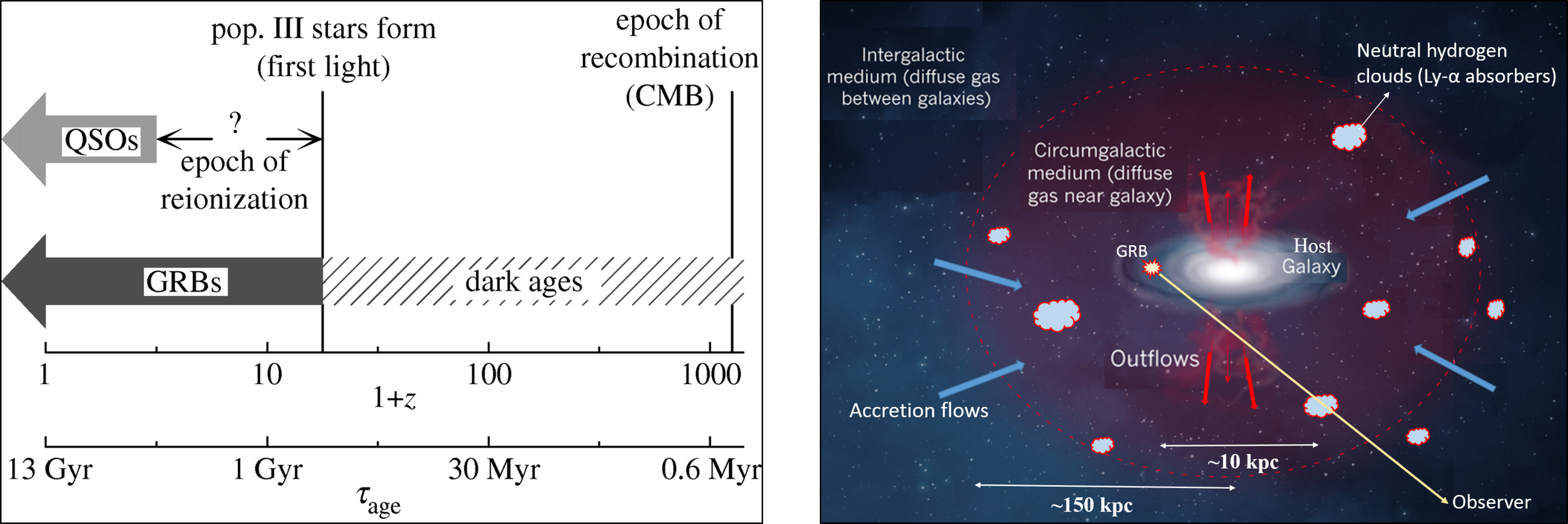 |
Relevant Publications: